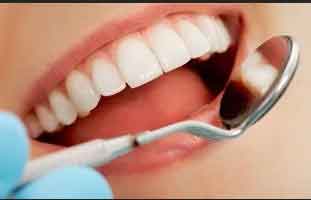- Home
- Editorial
- News
- Practice Guidelines
- Anesthesiology Guidelines
- Cancer Guidelines
- Cardiac Sciences Guidelines
- Critical Care Guidelines
- Dentistry Guidelines
- Dermatology Guidelines
- Diabetes and Endo Guidelines
- Diagnostics Guidelines
- ENT Guidelines
- Featured Practice Guidelines
- Gastroenterology Guidelines
- Geriatrics Guidelines
- Medicine Guidelines
- Nephrology Guidelines
- Neurosciences Guidelines
- Obs and Gynae Guidelines
- Ophthalmology Guidelines
- Orthopaedics Guidelines
- Paediatrics Guidelines
- Psychiatry Guidelines
- Pulmonology Guidelines
- Radiology Guidelines
- Surgery Guidelines
- Urology Guidelines
Nanodiamonds show promise for aiding recovery from root canal

People who undergo root canals may soon have a tiny but powerful ally that could prevent infection after treatment.
Researchers at the UCLA School of Dentistry and the UCLA Henry Samueli School of Engineering and Applied Science found in a clinical trial that nanodiamonds protected disinfected root canals after the nerve and pulp were removed, thereby improving the likelihood of a full recovery. The findings are a milestone for the use of nanodiamonds in humans.
Nanodiamonds are tiny particles made of carbon and are so small that millions of them could fit on the head of a pin. They resemble soccer balls but have facets like actual diamonds. Those facets enable the nanodiamonds to deliver a wide range of drugs and imaging agents.
In a paper published Oct. 23 in Proceedings of the National Academy of Sciences, the UCLA researchers write that combining nanodiamonds with gutta percha, a material used to fill disinfected root canals, may enhance the gutta percha's protective properties.
"Harnessing the unique properties of nanodiamonds in the clinic may help scientists, doctors and dentists overcome key challenges that confront several areas of health care, including improving lesion healing in oral health," said Dean Ho, professor of oral biology and medicine in the dental school and a co-corresponding author of the study.
Protecting disinfected root canals is a delicate process. Dentists use gutta percha to block bacteria from infiltrating the tooth, but it can break during the procedure or create pockets of space for bacteria to infiltrate, which leads to infection.
The researchers tested nanodiamond-embedded gutta percha, or NDGP, in three people who were undergoing root canal procedures. Tests of the implanted material confirmed that the NDGP was more resistant to buckling and breaking than conventional gutta percha.
All three patients healed properly, without unusual pain and without infection.
"This trial confirms the immense promise of using nanodiamonds to overcome barriers for a range of procedures, from particularly challenging endodontics cases to orthopedics, tissue engineering, and others," said co-corresponding author Dr. Mo Kang, UCLA Dentistry's Jack Weichman Professor of Endodontics.
Using NDGP for the procedures did not require changes to any of the standard procedures for root canals, said Dr. Eric Sung, the paper's co-corresponding author and a UCLA professor of clinical dentistry and the United Cerebral Palsy of Los Angeles Professor of Special Patient Care.
Ho, one of the world's leading researchers on the medical use of nanodiamonds, has collaborated with oncologists, cancer biologists, mechanical engineers, materials scientists, chemists and others over the past 10 years to explore how nanodiamonds could be used in oral health, cancer treatment, regenerative medicine and antimicrobial applications, among other areas.
"We believe nanodiamonds could ultimately help us sidestep drug resistance in cancer, improve the efficiency of magnetic resonance imaging and address other clinical challenges," said Ho, who also is a professor of bioengineering, co-director of the Jane and Jerry Weintraub Center for Reconstructive Biotechnology, and a member of the UCLA Jonsson Comprehensive Cancer Center and the California NanoSystems Institute at UCLA.

Disclaimer: This site is primarily intended for healthcare professionals. Any content/information on this website does not replace the advice of medical and/or health professionals and should not be construed as medical/diagnostic advice/endorsement or prescription. Use of this site is subject to our terms of use, privacy policy, advertisement policy. © 2020 Minerva Medical Treatment Pvt Ltd